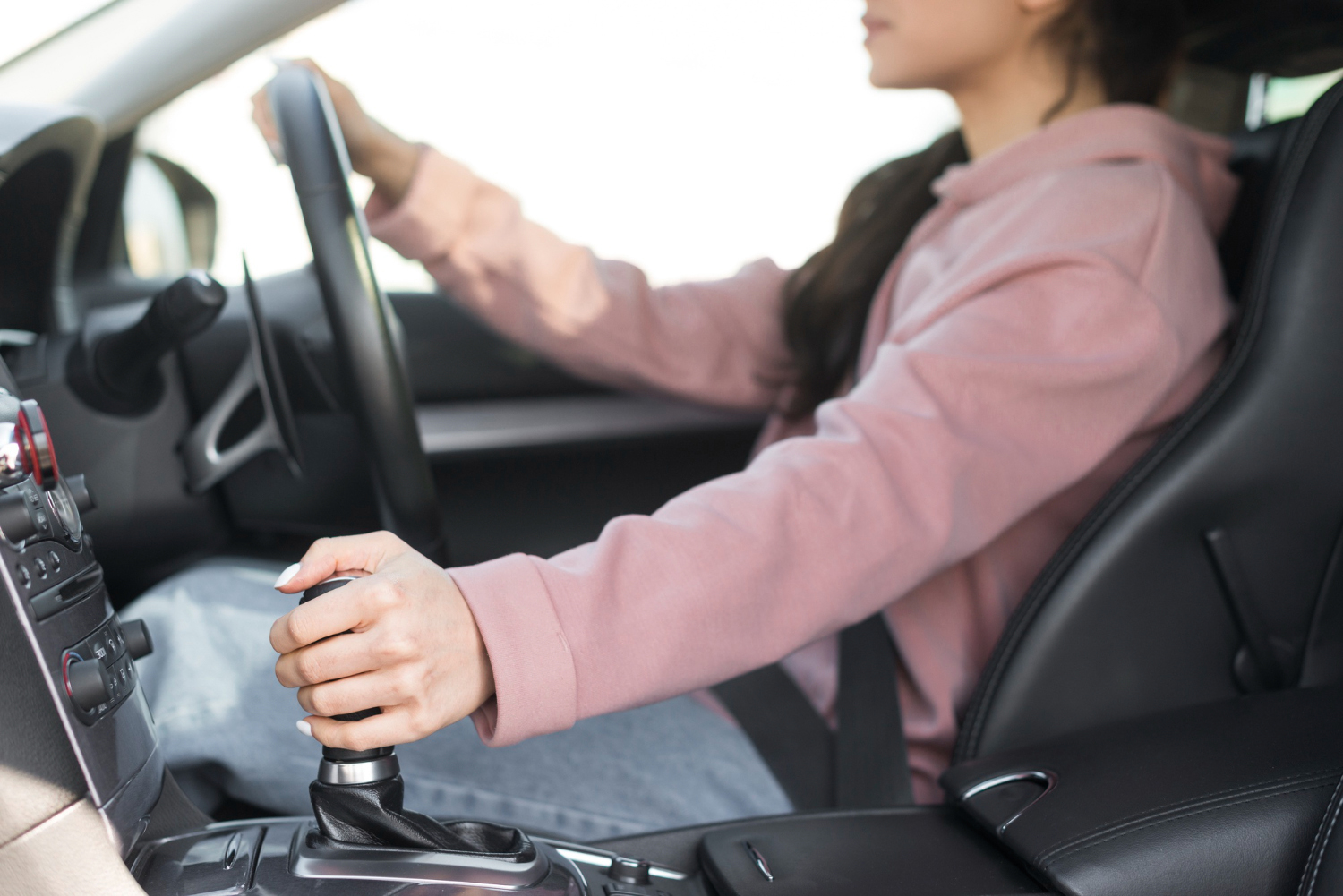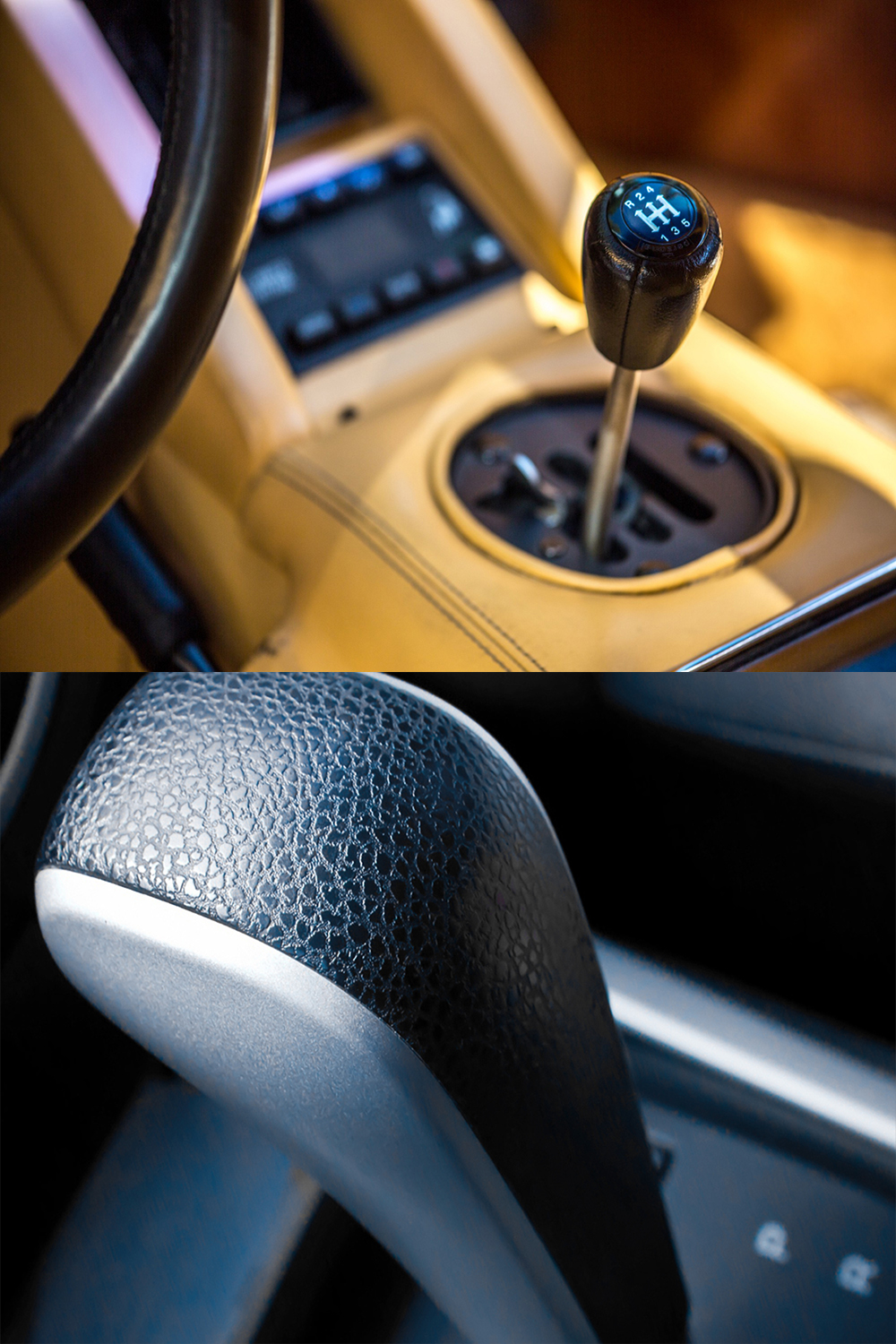Driving an automatic car with confidence
Driving An Automatic Car

The Rise of Automatic Transmissions
Automatic transmissions are becoming increasingly sophisticated and economical, so much so that many more people are now driving an automatic car in the UK than ever before. Auto transmissions are developing so fast and becoming so sophisticated that there are more people driving an automatic car than ever before and automatic vehicles are seeing a huge uptick in sales. With the increase of the sale of automatic vehicles increasing by around 18% year-on-year, and the sale of new manuals declining incredibly quickly, some industry experts believe that the sale of new manual gearbox cars will cease completely as soon as the late 2020s.

Key Differences
Manual vs Automatic
In a manual car, the decision to change gear is made by the driver, who presses the clutch pedal and physically selects the gear before bringing up the clutch.
When driving an automatic car, the gear change happens when the car decides it is required based on the load on the engine and the speed at the wheels. Usually the gear will increase when the speed increases and when the speed falls, so too does the gear.
Just as a driver usually selects a lower gear to climb a hill, an automatic will usually select a lower gear also to climb an incline, as engine load increases.
Understanding Gear Selectors
Most automatic cars have a gear selector, either on the floor where the gearstick usually would be, or on the steering column close to the indicator stalk. There are letters on the selector.
D Drive
This is selected at the beginning of your journey and tells the car you want to use the forward gears. There can be different modes too. On our Mercedes-Benz-A-Class cars you can also select "Eco" and "Sport" modes within "Drive". This changes the time between gear changes.
R Reverse
This is selected for moving the car backwards.
N Neutral
You can put the car in "Neutral" when stopped in traffic or at lights or in say, a car wash where the wheels must remain unlocked whilst being pulled along on a track.
P Park
This is the same as "Neutral", but the wheels are locked. You should be in "Park" when you switch the engine off or on.
Standard Gear Options
On some cars there may be a 3, 2 and a 1 (or L) These are a way to override the automatic system to say, go down a steep hill in a low gear, which some auto systems do not always do as well as a manual. Increasingly however, these numbered selections are being replaced on many cars by paddles on the steering wheel that when operated act in the same way and override the auto system temporarily.
Semi-Automatic Systems
Another type of system entirely also exists but is much rarer and that is called “semi-automatic”. It is a manual system with a gear stick but no clutch pedal. The clutch is operated automatically when the next gear is selected.
Operating an Automatic Vehicle
Regardless of what type of automatic system you drive, the following advice should be of use, however it is the driver’s responsibility to familiarise themselves with their vehicle and to read the manual that comes with their vehicle.
Moving Off
- Ensure the gear selector is in Park (P) and that your foot is firmly pressing the brake pedal before starting the engine
- Place your foot on the brake and move the selector lever from Park (P) into Drive (D)
- Use your right foot for the brake, as you would in a manual car
Understanding Creep
Auto cars are intentionally set to ‘creep’ forward without any fuel being added from the accelerator pedal. This is an important reason that when stopped with the engine on and in D, you MUST either keep your foot on the brake or apply the parking brake – preferably both.
Using Kick-down
In the same way that the driver of a manual might choose a lower gear in order to obtain a sudden burst of acceleration, the driver of an automatic can do so by activating the ‘kick-down’ mechanism of the accelerator. Kick-down allows you to temporarily override the automatic selection of gears and ensures that the transmission stays in lower gears for a longer time. This gives you more acceleration than normal.
To start the kick-down, simply press the accelerator pedal sharply to the floor until the pedal seems to reach its maximum travel – then push a bit harder and the pedal will move past the previous point, ‘kicking-down’ to achieve more acceleration. When you have achieved the overtake, or intended manoeuvre, simply ease off the pedal and the car will return to normal drive and will choose the most appropriate gear.
Advanced Driving Techniques
Slowing and Stopping
This is simpler when driving an automatic car than when driving a manual car, but it is important to be aware that there is limited drivetrain braking in an auto compared to a manual. What this means is that in a manual, the gearbox, and everything between the gearbox and the wheels (the drivetrain) acts to slow the car down and help the brakes. In an auto, this is much reduced.
Move your right foot from the accelerator pedal to the brake pedal and start to progressively brake – in other words – do not pump the brake or stamp. Brake earlier than in a manual. The auto gearbox will go down the gears as it sees fit, allowing you to think about nothing else but driving safely and observing fully.
When the car stops, keep your foot on the brake pedal to avoid creep, and consider using the parking brake if you are going to be there more than a moment or two.
Parking and Waiting
In an automatic, because of creep, it is correct practice to apply the parking brake when waiting in traffic. If you are only paused for a moment, just keep your foot on the brake. Keep in mind the phrase “apply the parking brake when a pause becomes a wait.”
Parking Sequence:
When parking, the correct sequence of events is usually this:
1 Apply Parking brake
2 Select Park (P)
3 Foot off the footbrake
4 Turn engine off
If you turn the engine off with your foot on the footbrake it doesn’t really matter. What does really matter is that you put your car in Park before switching off your engine This is for several reasons:
IMMEDIATE RISKS
- Transmission Damage: Shutting off the engine before fully engaging the park gear can prevent the transmission from properly locking
- Safety Risks: The vehicle may roll if it is not securely in park
LONG-TERM ISSUES
- Wear and Tear: Can lead to gradual wear on transmission components
- Fluid Circulation: Premature engine shutdown can affect lubrication and cooling
While there might not be an immediate catastrophic failure, the practice can lead to cumulative damage that manifests over time, resulting in costly repairs. It’s best to always shift into Park before turning off the engine to avoid these risks.
When driving off again, the correct sequence of events is usually this:
1 Foot on Footbrake
2 Turn engine on
4 Select Drive (D)
3 Release Parking brake
Of course, in some cars there are variations. For example, in our Mercedes-Benz A-Class cars, the parking brake is released automatically when the car is in Drive, the accelerator is pressed and the car starts moving.
Special Driving Situations
These are special circumstances where a little extra skill when driving an automatic is required.
HILL STARTS
On steep gradients in some cars, creep may not be enough to move the vehicle after the parking brake is released. Many cars nowadays have a feature called ‘hill-start assist’ that prevent rolling back, but not all. If yours does not, the following procedure can be used:
- Keep the parking brake on and lightly add a little fuel with the accelerator pedal
- The bonnet of the car should rise
- Slowly release the parking brake and let the car creep forward before adding some more fuel
DRIVING DOWNHILL
To control the car’s speed downhill and to avoid excessive braking choose one of the fixed gears if available – 3,2,or 1 (or L). If they are not available, then it is likely that a ‘manual’ override paddle will be available on the steering wheel allowing you to choose a fixed lower gear. Doing this will help keep your speed lower. When you want to return to full auto mode, simply select D again.
CORNERING
Some automatics can change up as you approach a corner due to lower pressure on the accelerator pedal, which could cause you to take the corner faster than you had meant to do.
To avoid this, slow down before you reach the corner then gently accelerate as you start to turn. This will persuade the automatic gearbox to choose a lower gear for the corner.
On roads with a series of bends, you can select the 3rd locked gear position to prevent the gearbox from selecting higher gears or choose one of the manual override gears on the paddle if that option is available.
DRIVING IN SNOW AND ICE
Again, choosing a fixed higher gear helps driving is such conditions, as driving in a higher gear in a manual would.
MANOEUVRING
It is unlikely that when manoeuvring at slow speeds that you will have to touch the accelerator pedal at all. You can usually safely control the car by means of the brake alone.
If you are carrying out a manoeuvre on a hill you might find it helpful to use the brake with your LEFT foot whilst applying a small amount of acceleration with your right. This is the ONLY occasion you should brake with your left foot.
Learn with experts
Start your lessons today
Call us today on 07914 200588 or contact us using the form to book your Automatic Driving Lessons.